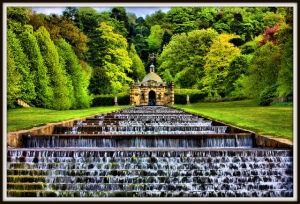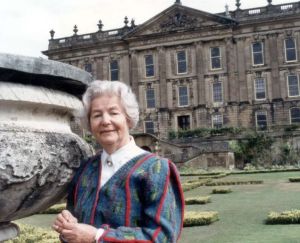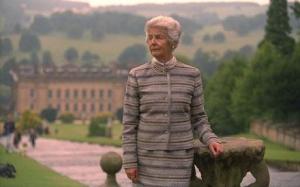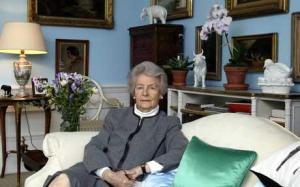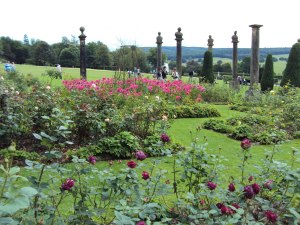Georgia Totto O’Keeffe (November 15, 1887 – March 6, 1986) was an American artist. She is best known for her paintings of enlarged flowers, New York skyscrapers, and New Mexico landscapes. O’Keeffe has been recognized as the “Mother of American modernism”
Early life and education
Georgia O’Keeffe was born on November 15, 1887 in a farmhouse located at 2405 Hwy T in the town of Sun Prairie, Wisconsin. Her parents, Francis Calyxtus O’Keeffe and Ida (Totto) O’Keeffe, were dairy farmers. Her father was of Irish descent. Her maternal grandfather George Victor Totto, for whom O’Keeffe was named, was a Hungarian count who came to America in 1848.
O’Keeffe was the second of seven children and the first daughter. She attended Town Hall School in Sun Prairie. By age ten she had decided to become an artist, and she and her sister received art instruction from local watercolorist Sara Mann. O’Keeffe attended high school at Sacred Heart Academy in Madison, Wisconsin as a boarder between 1901 and 1902. In late 1902, the O’Keeffes moved from Wisconsin to the close-knit neighborhood of Peacock Hill in Williamsburg, Virginia. O’Keeffe stayed in Wisconsin with her aunt and attended Madison High School, then joined her family in Virginia in 1903. She completed high school as a boarder at Chatham Episcopal Institute in Virginia (now Chatham Hall) and graduated in 1905. She was a member of the Kappa Delta sorority.
O’Keeffe studied at the School of the Art Institute of Chicago from 1905 to 1906. In 1907, she attended the Art Students League in New York City, where she studied under William Merritt Chase. In 1908, she won the League’s William Merritt Chase still-life prize for her oil painting Dead Rabbit with Copper Pot. Her prize was a scholarship to attend the League’s outdoor summer school in Lake George, New York. While in the city in 1908, O’Keeffe attended an exhibition of Rodin’s watercolors at the gallery 291, owned by her future husband, photographer Alfred Stieglitz.
O’Keeffe abandoned the idea of pursuing a career as an artist in late 1908, claiming that she could never distinguish herself as an artist within the mimetic tradition which had formed the basis of her art training.[7] She took a job in Chicago as a commercial artist. She did not paint for four years, and said that the smell of turpentine made her sick. She was inspired to paint again in 1912, when she attended a class at the University of Virginia Summer School, where she was introduced to the innovative ideas of Arthur Wesley Dow by Alon Bement. Dow encouraged artists to express themselves using line, color, and shading harmoniously. From 1912-14, she taught art in the public schools in Amarillo in the Texas Panhandle. She attended Teachers College of Columbia University from 1914–15, where she took classes from Dow, who greatly influenced O’Keeffe’s thinking about the process of making art.[7] She served as a teaching assistant to Bement during the summers from 1913–16 and taught at Columbia College, Columbia, South Carolina in late 1915, where she completed a series of highly innovative charcoal abstractions. After further course work at Columbia in early 1916 and summer teaching for Bement, she took a job as head of the art department at West Texas State Normal College from late 1916 to February 1918, the fledgling West Texas A&M University in Canyon just south of Amarillo. While there, she often visited the Palo Duro Canyon, making its forms a subject in her work.
Career
New York
O’Keeffe had made some charcoal drawings in late 1915 which she had mailed from South Carolina to Anita Pollitzer. Pollitzer took them to Alfred Stieglitz at his 291 gallery early in 1916. Stieglitz told Pollitzer that the drawings were the “purest, finest, sincerest things that had entered 291 in a long while”, and that he would like to show them. O’Keeffe had first visited 291 in 1908, but did not speak with Stieglitz then, although she came to have high regard for him and to know him in early 1916, when she was in New York at Teachers College. In April 1916, he exhibited ten of her drawings at 291. O’Keeffe knew that Stieglitz was planning to exhibit her work but he had not told her when, and she was surprised to learn that her work was on view; she confronted Stieglitz over the drawings but agreed to let them remain on exhibit. Stieglitz organized O’Keeffe’s first solo show at 291 in April 1917, which included oil paintings and watercolors completed in Texas.
Stieglitz and O’Keeffe corresponded frequently beginning in 1916 and, in June 1918, she accepted his invitation to move to New York to devote all of her time to her work. The two were deeply in love and, shortly after her arrival, they began living together, even though Stieglitz was married and 23 years her senior. That year, Stieglitz first took O’Keeffe to his family home at the village of Lake George in New York’s Adirondack Mountains, and they spent part of every year there until 1929, when O’Keeffe spent the first of many summers painting in New Mexico. In 1924, Stieglitz’s divorce was approved by a judge and, within four months, he and O’Keeffe married. It was a small, private ceremony at John Marin’s house, and afterward the couple went back home. There was no reception, festivities, or honeymoon. O’Keeffe said later that they married in order to help soothe the troubles of Stieglitz’s daughter Kitty who was being treated in a sanatorium for depression and hallucinations at that time. The marriage did not seem to have any immediate effect on either Stieglitz or O’Keeffe; they both continued working on their individual projects as they had before. For the rest of their lives together, their relationship was, as biographer Benita Eisler characterized it,
a collusion … a system of deals and trade-offs, tacitly agreed to and carried out, for the most part, without the exchange of a word. Preferring avoidance to confrontation on most issues, O’Keeffe was the principal agent of collusion in their union.
Stieglitz started photographing O’Keeffe when she visited him in New York City to see her 1917 exhibition. By 1937, when he retired from photography, he had made more than 350 portraits of her. Most of the more erotic photographs were made in the 1910s and early 1920s. In February 1921, forty-five of Stieglitz’s photographs were exhibited in a retrospective exhibition at the Anderson Galleries, including many of O’Keeffe, some of which depicted her in the nude. It created a public sensation. She once made a remark to Pollitzer about the nude photographs which may be the best indication of O’Keeffe’s ultimate reaction to being their subject: “I felt somehow that the photographs had nothing to do with me personally.” In 1978, she wrote about how distant from them she had become: “When I look over the photographs Stieglitz took of me-some of them more than sixty years ago—I wonder who that person is. It is as if in my one life I have lived many lives. If the person in the photographs were living in this world today, she would be quite a different person—but it doesn’t matter—Stieglitz photographed her then.”
Beginning in 1918, O’Keeffe came to know the many early American modernists who were part of Stieglitz’s circle of artists, including Charles Demuth, Arthur Dove, Marsden Hartley, John Marin, Paul Strand, and Edward Steichen. Strand’s photography, as well as that of Stieglitz and his many photographer friends, inspired O’Keeffe’s work. Also around this time, O’Keeffe became sick during the 1918 flu pandemic, like so many others. Soon after 1918, she began working primarily in oil, a shift away from having worked primarily in watercolor in the earlier 1910s. By the mid-1920s, O’Keeffe began making large-scale paintings of natural forms at close range, as if seen through a magnifying lens. In 1924, she painted her first large-scale flower painting Petunia, No. 2, which was first exhibited in 1925. She also completed a significant body of paintings of New York buildings, such as City Night and New York—Night (1926) and Radiator Bldg—Night, New York (1927).
O’Keeffe turned to working more representationally in the 1920s in an effort to move her critics away from Freudian interpretations. Her earlier work had been mostly abstract, but works such as Black Iris III (1926) evoke a veiled representation of female genitalia while also accurately depicting the center of an iris. O’Keeffe consistently denied the validity of Freudian interpretations of her art, but fifty years after it had first been interpreted in that way, many prominent feminist artists assessed her work similarly; Judy Chicago, for example, gave O’Keeffe a prominent place in her The Dinner Party. Although 1970s feminists celebrated O’Keeffe as the originator of “female iconography”, O’Keeffe rejected their celebration of her work and refused to cooperate with any of their projects.
In 1922, the New York Sun published an article quoting O’Keeffe: “It is only by selection, by elimination, and by emphasis that we get at the real meaning of things.” Inspired by Precisionism, The Green Apple, completed in 1922, depicts her notion of simple, meaningful life.
Beginning in 1923, Stieglitz organized annual exhibitions of O’Keeffe’s work. By the mid-1920s, O’Keeffe had become known as one of the most important American artists. Her work commanded high prices; in 1928, Stieglitz masterminded a sale of six of her calla lily paintings for US$25,000, which would have been the largest sum ever paid for a group of paintings by a living American artist. Although the sale fell through, Stieglitz’s promotion of it drew extensive media attention.
Hawaii
In 1938, the advertising agency N. W. Ayer & Son approached O’Keeffe about creating two paintings for the Hawaiian Pineapple Company (now Dole Food Company) to use in their advertising. Other artists who produced paintings of Hawaii for the Hawaiian Pineapple Company’s advertising include Lloyd Sexton, Jr., Millard Sheets, Yasuo Kuniyoshi, Isamu Noguchi, and Miguel Covarrubias. The offer came at a critical time in O’Keeffe’s life: she was 51, and her career seemed to be stalling (critics were calling her focus on New Mexico limited, and branding her desert images “a kind of mass production”). She arrived in Honolulu February 8, 1939 aboard the SS Lurline, and spent nine weeks in Oahu, Maui, Kauai, and the island of Hawaii. By far the most productive and vivid period was on Maui, where she was given complete freedom to explore and paint. She painted flowers, landscapes, and traditional Hawaiian fishhooks. Back in New York, O’Keeffe completed a series of 20 sensual, verdant paintings. However, she did not paint the requested pineapple until the Hawaiian Pineapple Company sent a plant to her New York studio.
New Mexico
By 1929, O’Keeffe acted on her increasing need to find a new source of inspiration for her work and to escape summers at Lake George, where she was surrounded by the Stieglitz family and their friends. O’Keeffe had considered finding a studio separate from Lake George in upstate New York and had also thought about spending the summer in Europe, but opted instead to travel to Santa Fe, with her friend Rebecca Strand. The two set out by train in May 1929 and soon after their arrival, Mabel Dodge Luhan moved them to her house in Taos and provided them with studios. O’Keeffe went on many pack trips exploring the rugged mountains and deserts of the region that summer and later visited the nearby D. H. Lawrence Ranch, where she completed her now famous oil painting, The Lawrence Tree, currently owned by the Wadsworth Athenaeum in Hartford, Connecticut.
While in Taos in 1929, O’Keeffe visited and painted the nearby historical San Francisco de Asis Mission Church at Ranchos de Taos. She made several paintings of the church, as had many artists, and her painting of a fragment of it silhouetted against the sky captured it in a different way.
Between 1929 and 1949, O’Keeffe spent part of nearly every year working in New Mexico. She collected rocks and bones from the desert floor and made them and the distinctive architectural and landscape forms of the area subjects in her work. She also went on several camping trips with friends, visiting important sites in the Southwest, and in 1961, she and others, including photographers Eliot Porter and Todd Webb, went on a rafting trip down the Colorado River about Glen Canyon, Utah.
Late in 1932, O’Keeffe suffered a nervous breakdown that was brought on, in part, because she was unable to complete a Radio City Music Hall mural project that had fallen behind schedule. She was hospitalized in early 1933 and did not paint again until January 1934. In early 1933 and 1934, O’Keeffe recuperated in Bermuda, and she returned to New Mexico in mid-1934. In August of that year, she visited Ghost Ranch, north of Abiquiú, for the first time and decided immediately to live there; in 1940, she moved into a house on the ranch property. The varicolored cliffs of Ghost Ranch inspired some of her most famous landscapes. In 1977, O’Keeffe wrote: “[the] cliffs over there are almost painted for you—you think—until you try to paint them.” Among guests to visit her at the ranch over the years were Charles and Anne Lindbergh, singer-songwriter Joni Mitchell, poet Allen Ginsberg, and photographer Ansel Adams.
Known as a loner, O’Keeffe explored the land she loved often in her Ford Model A, which she purchased and learned to drive in 1929. She often talked about her fondness for Ghost Ranch and Northern New Mexico, as in 1943, when she explained: “Such a beautiful, untouched lonely feeling place, such a fine part of what I call the ‘Faraway’. It is a place I have painted before … even now I must do it again.”
In the 1930s and 1940s, O’Keeffe’s reputation and popularity continued to grow, earning her numerous commissions. Her work was included in exhibitions in and around New York. She completed Summer Days, a painting featuring a deer’s skull adorned with various wildflowers, against a desert background in 1936, and it became one of her most famous and well-known works. During the 1940s O’Keeffe had two one-woman retrospectives, the first at the Art Institute of Chicago (1943), and the second in 1946 at the Museum of Modern Art (MoMA) in Manhattan, the first retrospective MoMA held for a woman artist. O’Keeffe enjoyed many accolades and honorary degrees from numerous universities. In the mid-1940s, the Whitney Museum of American Art in Manhattan sponsored a project to establish the first catalogue of her work.
As early as 1936, O’Keeffe developed an intense interest in what is called the “Black Place”, which was about 150 miles west of her Ghost Ranch house, and she made an extensive series of paintings of this site in the 1940s. She traveled and camped there often with her friend, Maria Chabot, and in 1945 with Eliot Porter as well as in subsequent years,1959, and 1977. O’Keeffe said that the Black Place resembled “a mile of elephants with gray hills and white sand at their feet.” At times the wind was so strong when she was painting there that she had trouble keeping her canvas on the easel. When the heat from the sun became intense, she crawled under her car for shade. The Black Place still remains remote and uninhabited.
She also made paintings of the “White Place”, a white rock formation located near her Abiquiú house. In 1945, O’Keeffe bought a second house, an abandoned hacienda in Abiquiú, some 18 miles (26 km) south of Ghost Ranch. The Abiquiú house was renovated through 1949 by Chabot.
Shortly after O’Keeffe arrived for the summer in New Mexico in 1946, Stieglitz suffered a cerebral thrombosis. She immediately flew to New York to be with him. He died on July 13, 1946. She buried his ashes at Lake George. She spent the next three years mostly in New York settling his estate, and moved permanently to New Mexico in 1949. From 1946 through the 1950s, she made the architectural forms of her Abiquiú house—patio wall and door—subjects in her work. Another distinctive painting of the decade was Ladder to the Moon, 1958. From her first world travels in the late 1950s, O’Keeffe produced an extensive series of paintings of clouds, such as Above the Clouds I, 1962/1963. These were inspired by her views from the windows of airplanes. Below is an external link to a color image of one of these aerial cloudscape canvases.
O’Keeffe met photographer Todd Webb in the 1940s, and after his move to New Mexico in 1961, he often made photographs of her, as did numerous other important American photographers, who consistently presented O’Keeffe as a “loner, a severe figure and self-made person.” While O’Keeffe was known to have a “prickly personality”, Webb’s photographs portray her with a kind of “quietness and calm” suggesting a relaxed friendship, and revealing new contours of O’Keeffe’s character.
In late 1970, the Whitney Museum of American Art mounted the Georgia O’Keeffe Retrospective Exhibition, the first retrospective exhibition of her work in New York since 1946, the year Stieglitz died. This exhibit did much to revive her public career.
Later years and death
In 1972, O’Keeffe’s eyesight was compromised by macular degeneration, leading to the loss of central vision and leaving her with only peripheral vision. She stopped oil painting without assistance in 1972, but continued working in pencil and charcoal until 1984. Juan Hamilton, a young potter, appeared at her ranch house in 1973 looking for work. She hired him for a few odd jobs and soon employed him full-time. He became her closest confidant, companion, and business manager until her death. Hamilton taught O’Keeffe to work with clay and, working with assistance, she produced clay pots and a series of works in watercolor. In 1976, she wrote a book about her art and allowed a film to be made about her in 1977.
O’Keeffe became increasingly frail in her late 90s. She moved to Santa Fe in 1984, where she died on March 6, 1986 at the age of 98. In accordance with her wishes, her body was cremated and her ashes were scattered to the wind at the top of Pedernal Mountain, over her beloved “faraway”.
Awards
In 1962, O’Keeffe was elected to the fifty-member American Academy of Arts and Letters. In 1966, she was elected a Fellow of the American Academy of Arts and Sciences. In 1977, President Gerald R. Ford presented O’Keeffe with the Presidential Medal of Freedom, the highest honor awarded to American civilians. In 1985, she was awarded the National Medal of Arts.
Legacy
Following O’Keeffe’s death, her family contested her will because codicils made to it in the 1980s had left all of her estate to Hamilton. The case was ultimately settled out of court in July 1987. The case became famous as a precedent in estate planning. A substantial part of her estate’s assets were transferred to the Georgia O’Keeffe Foundation, which dissolved in 2006, leaving these assets to the Georgia O’Keeffe Museum, established in Santa Fe in 1995 to perpetuate O’Keeffe’s artistic legacy. These assets included a large body of her work, photographs, archival materials, and her Abiquiú house, library, and property. The Georgia O’Keeffe Home and Studio in Abiquiú was designated a National Historic Landmark in 1998 and is now owned by the Georgia O’Keeffe Museum.
In 1991, the PBS aired the American Playhouse production A Marriage: Georgia O’Keeffe and Alfred Stieglitz, starring Jane Alexander as O’Keeffe and Christopher Plummer as Alfred Stieglitz.
In 1996, the U.S. Postal Service issued a 32 cent stamp honoring O’Keeffe. In 2013, on the 100th anniversary of the Armory Show, the USPS issued a stamp featuring O’Keeffe’s Black Mesa Landscape, New Mexico/Out Back of Marie’s II, 1930 as part of their Modern Art in America series.
In 2006, a fossilized species of archosaur was named after O’Keeffe. Blocks originally quarried in 1947 and 1948 near O’Keeffe’s home at Ghost Ranch were opened fifty years after being collected. The fossil strongly resembles ornithomimid dinosaurs, but are actually more closely related to crocodiles. The specimen was named Effigia okeeffeae (“O’Keeffe’s Ghost”) in January 2006, “in honor of Georgia O’Keeffe for her numerous paintings of the badlands at Ghost Ranch and her interest in the Coelophysis Quarry when it was discovered”.
Lifetime Television produced a biopic of Georgia O’Keeffe starring Joan Allen as O’Keeffe, Jeremy Irons as Alfred Stieglitz, Henry Simmons as Jean Toomer, Ed Begley, Jr. as Stieglitz’s brother Lee, and Tyne Daly as Mabel Dodge Luhan. It premiered on September 19, 2009.
On 20 November 2014, O’Keeffe’s 1932 painting Jimson Weed/White Flower No. 1 sold for $44,405,000, more than three times the previous world auction record for any female artist.
































































